Monuments in India built by the Mughals stand as a testament to the magnificence of the Mughal dynasty and its enduring legacy in Indian history. These awe-inspiring architectural marvels showcase a fusion of Persian, Indian, and Islamic influences.
Captivating visitors with their grandeur and intricate craftsmanship. Each monument narrates a captivating story of the Mughal emperors’ opulence, love, power, and religious tolerance.
Let us embark on a journey through time and explore these remarkable monuments that continue to enthrall and inspire the world.
Taj Mahal, Agra
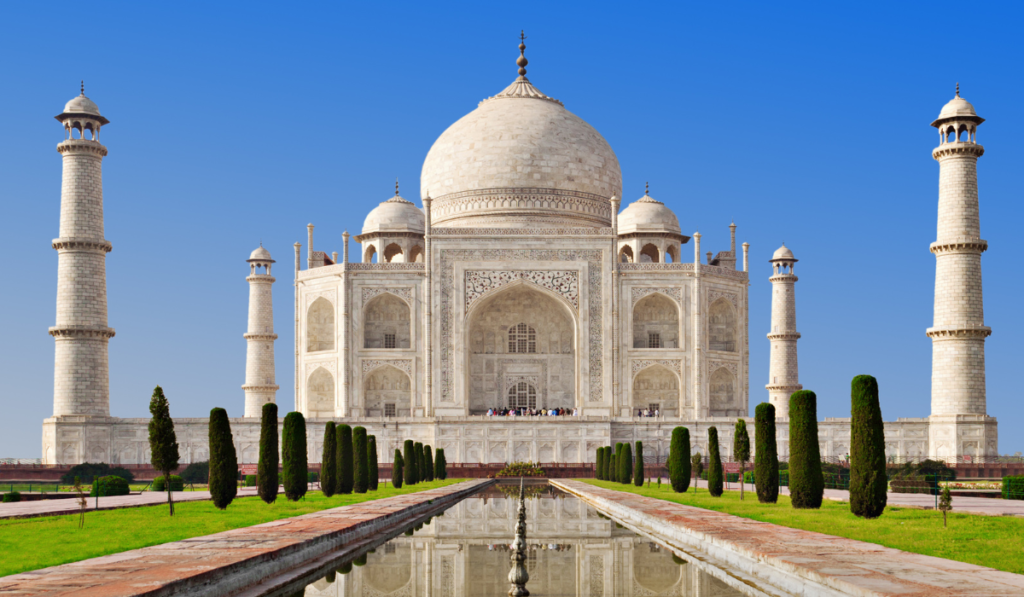
The Taj Mahal, located in Agra, is one of the most iconic and revered monuments in the world. Commissioned by Emperor Shah Jahan in memory of his beloved wife, Mumtaz Mahal. The Taj Mahal is a masterpiece of Mughal architecture.
Its pristine white marble facade, intricate carvings, and symmetrical gardens create a breathtaking sight that leaves visitors in awe.
The monument’s timeless beauty and poignant love story have earned it a place on the list of UNESCO. World Heritage Sites and have made it a symbol of eternal love and romance.
Red Fort, Delhi
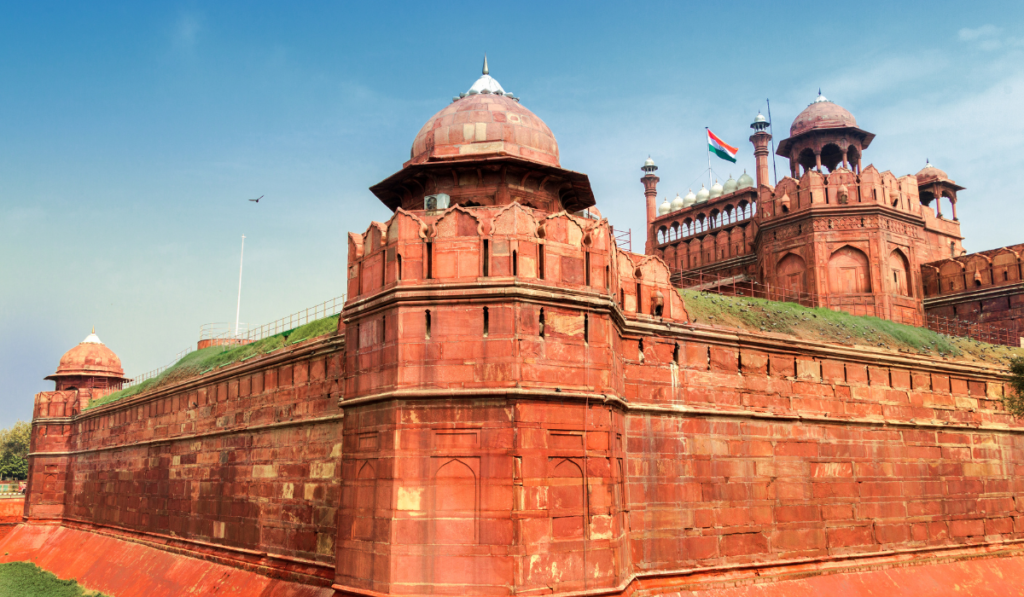
The Red Fort, also known as Lal Qila, stands as a majestic symbol of Mughal power is one of the top historical place in delhi and grandeur in the heart of Delhi. Built by Emperor Shah Jahan as his new capital. The Red Fort served as the seat of Mughal emperors for nearly two centuries.
The imposing red sandstone walls, magnificent gateways, and opulent palaces within the complex reflect the architectural brilliance of the Mughal era.
The fort’s historical significance lies in being the site where India’s independence was declared in 1947. Making it an emblem of the country’s struggle for freedom.
Humayun’s Tomb, Delhi
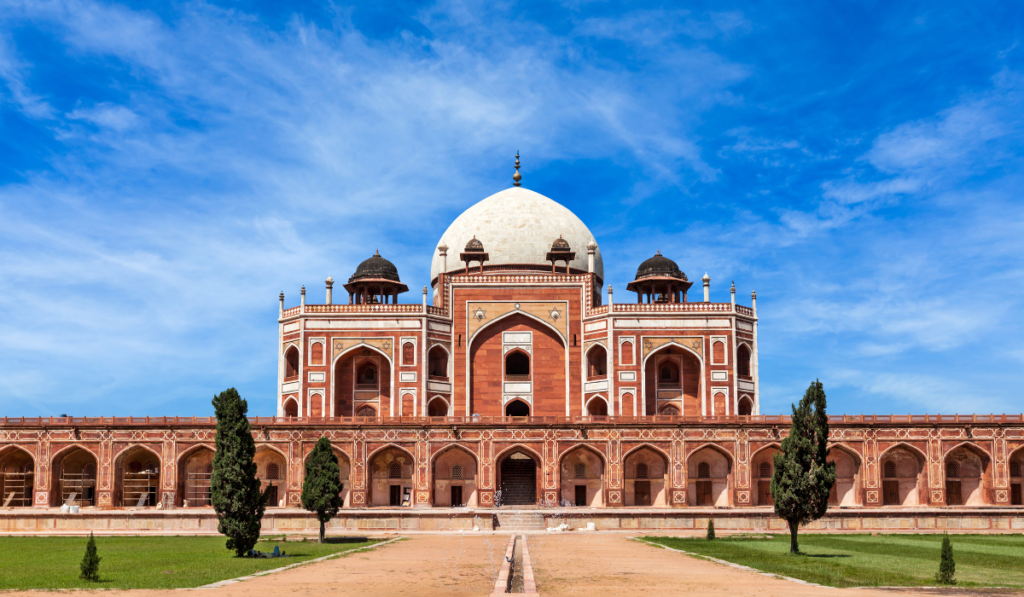
Humayun’s Tomb, located in Delhi, is one of the earliest examples of Mughal architecture in India and served as an inspiration for the construction of the Taj Mahal.
Commissioned by Empress Bega Begum, the widow of Emperor Humayun. The tomb showcases a harmonious blend of Persian and Indian architectural styles.
The grand mausoleum, set amidst lush gardens and water channels, exudes an aura of serenity and elegance. Its inclusion on the list of UNESCO World Heritage Sites highlights its historical and cultural significance.
Buland Darwaza, Fatehpur Sikri
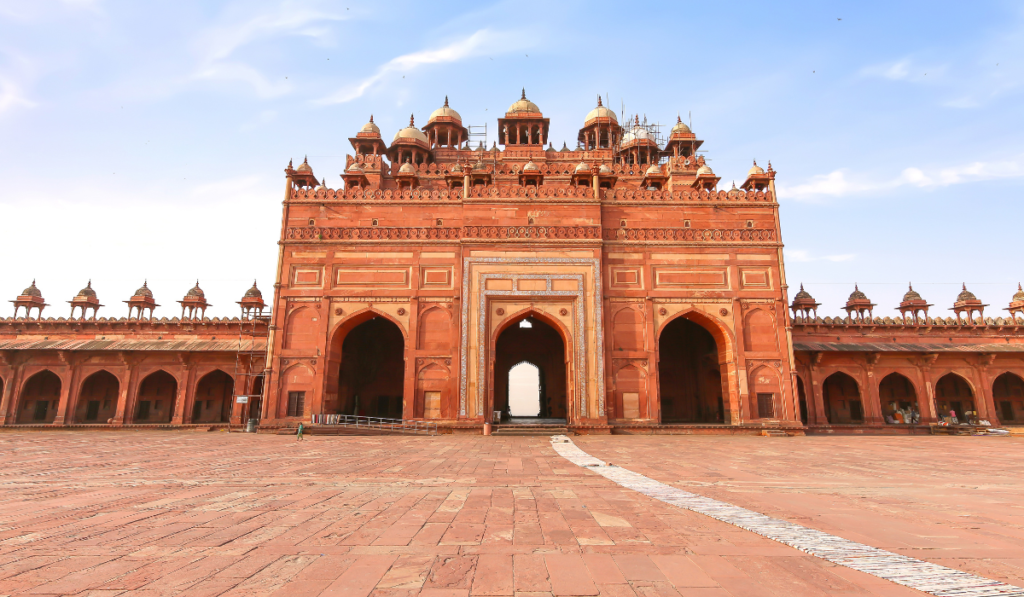
The Buland Darwaza, or “Gate of Magnificence,” is an awe-inspiring entrance gate located at Fatehpur Sikri, a once-thriving Mughal capital near Agra. Built by Emperor Akbar to commemorate his victory over Gujarat, this colossal gateway is a striking example of Mughal architecture.
Its imposing height, intricate carvings, and Persian inscriptions showcase the grandeur of the Mughal era. The Buland Darwaza serves as a symbol of Akbar’s military triumphs and architectural legacy.
Jama Masjid, Delhi
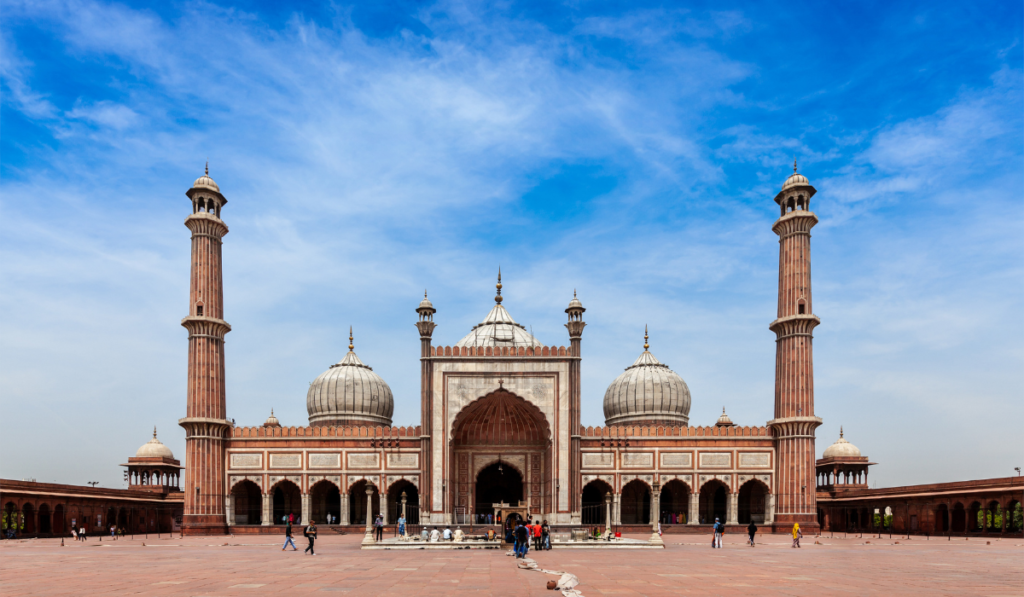
The Jama Masjid in Delhi stands as an epitome of Mughal architecture and is one of the largest mosques in India. Commissioned by Emperor Shah Jahan. This grand mosque showcases a stunning blend of red sandstone and white marble, creating a captivating visual spectacle.
Its vast courtyard and iconic central dome are testaments to the architectural prowess of the Mughal craftsmen. The Jama Masjid continues to be a significant religious and cultural site, attracting devotees and tourists alike.
Bibi Ka Maqbara, Aurangabad
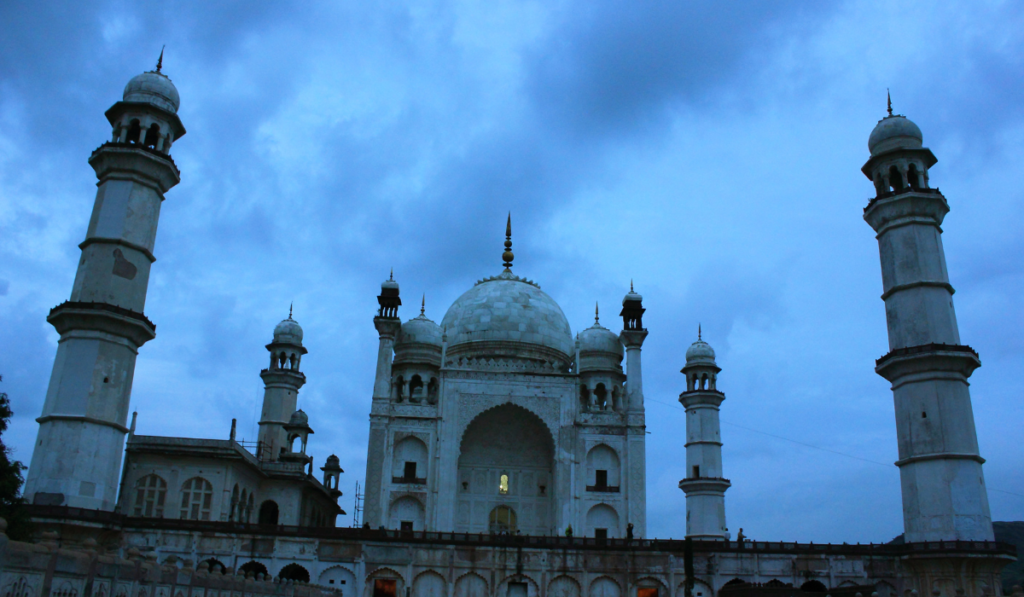
Often referred to as the “Taj of the Deccan,” Bibi Ka Maqbara is a splendid mausoleum located in Aurangabad, Maharashtra. Built by Prince Azam Shah, the son of Emperor Aurangzeb, in memory of his mother, Dilras Banu Begum. This monument bears a striking resemblance to the Taj Mahal.
While not as grand as its inspiration, the Bibi Ka Maqbara exudes its own charm with intricate carvings and a peaceful ambiance.
Agra Fort, Agra
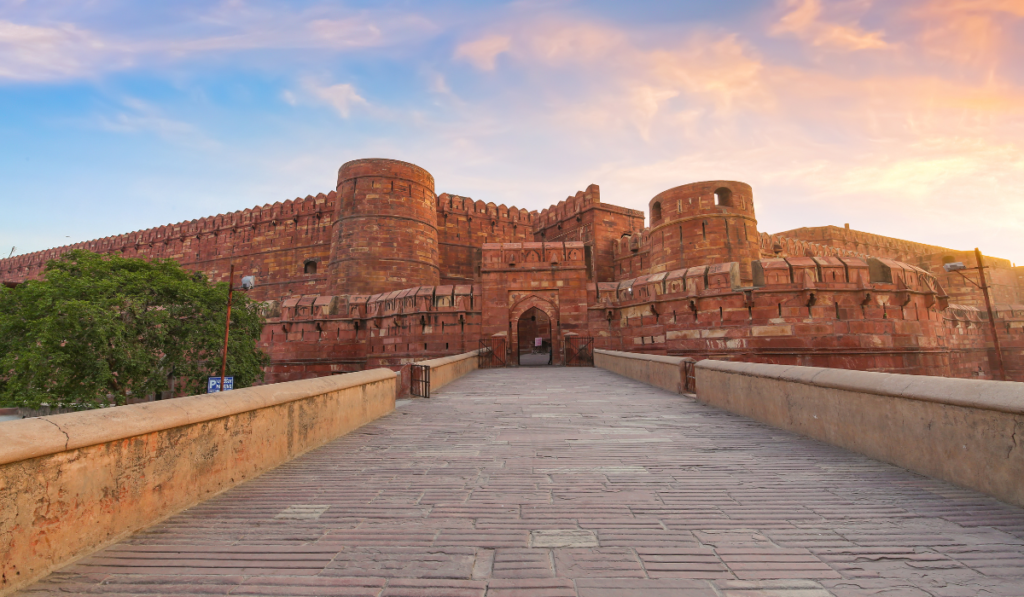
The Agra Fort, situated in Agra, is a UNESCO World Heritage Site and a fine example of Mughal military architecture. Built by Emperor Akbar, this imposing red sandstone fort served as the main residence of the Mughal emperors until Shah Jahan moved the capital to Delhi.
The fort’s intricate palaces, audience halls, and the exquisite Moti Masjid showcase the opulence and architectural brilliance of the Mughals.
Pari Mahal, Srinagar
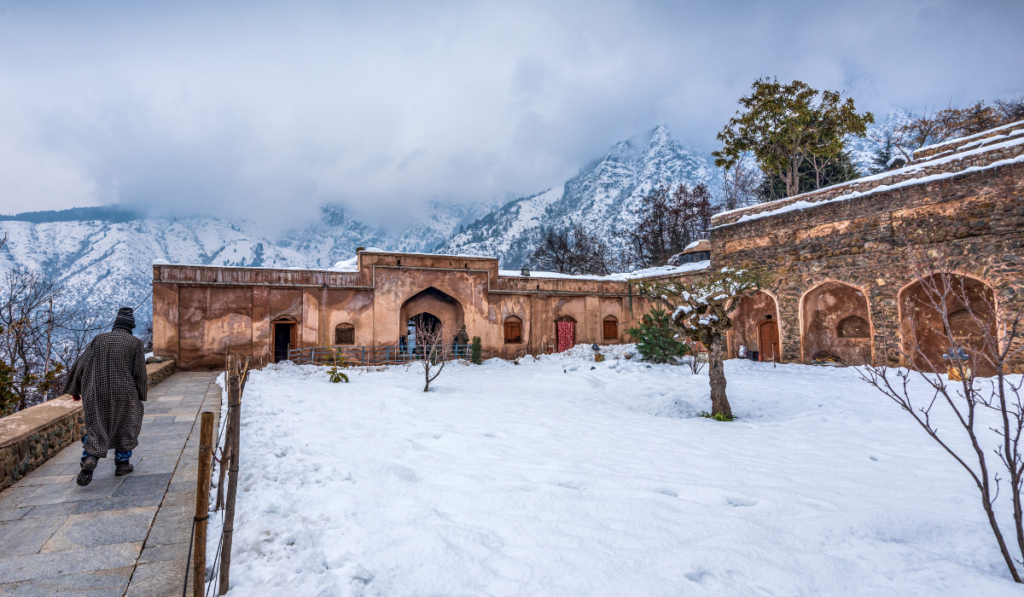
Pari Mahal, also known as the “Palace of Fairies,” is a stunning historical monument located in Srinagar, Jammu, and Kashmir. Built during the reign of Emperor Shah Jahan.
This beautiful garden and palace complex overlooks the picturesque Dal Lake. It reflects a blend of Islamic and Persian architectural styles, making it a unique attraction in the region.
Safdarjung Tomb, Delhi
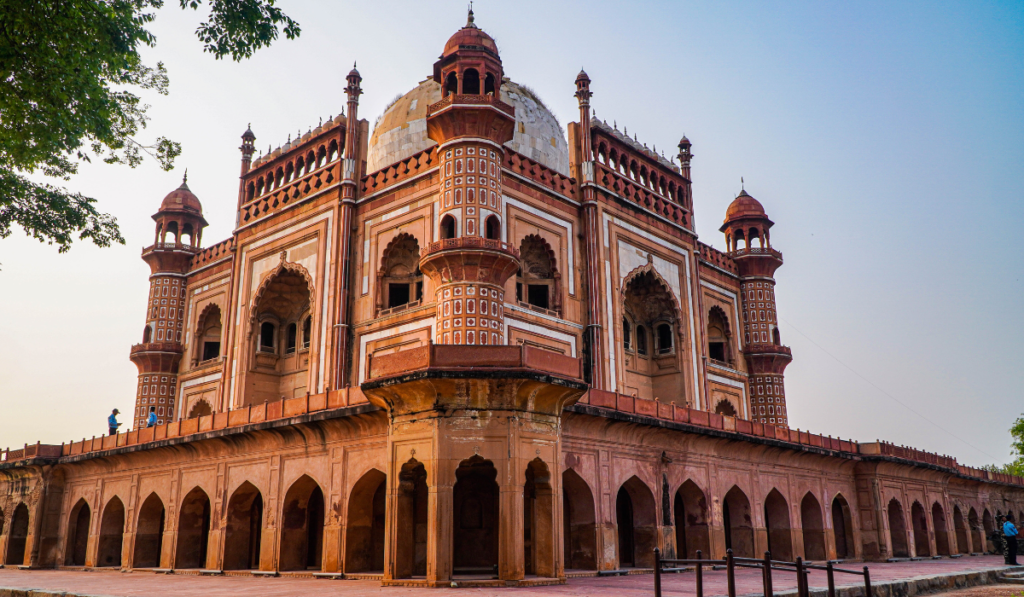
The Safdarjung Tomb in Delhi is the last garden tomb of the Mughal era, built in 1754 for Safdarjung, the Prime Minister of Emperor Muhammad Shah.
This elegant mausoleum is often compared to Humayun’s Tomb and showcases a similar architectural style. The garden setting and intricate marble work add to the charm of this historical monument.
Kabuli Bagh Mosque, Panipat

Located in Panipat, Haryana, the Kabuli Bagh Mosque is a historical site built during the reign of Babur, the first Mughal emperor. It served as a mosque and a mausoleum for Kabuli Begum, Babur’s sister.
The mosque’s simple yet elegant design reflects the early Mughal architectural style, making it a significant monument in Indian history.
Conclusion
Monuments in India built by the mughals stand as living testaments to the rich cultural heritage and architectural brilliance of the Mughal dynasty. Each of these structures tells a unique story of love, power, and artistic excellence, drawing millions of visitors from around the world to marvel at their timeless beauty and historical significance.
FAQs
Who were the Mughals, and what role did they play in Indian history?
The Mughals were a dynasty of Central Asian origin that ruled over a vast empire in the Indian subcontinent from the early 16th century to the mid-19th century. They played a significant role in shaping India’s history, leaving behind a lasting impact on its culture, politics, and architecture.
What is the historical significance of the Mughal-built Lal Qila, also known as the Red Fort, in Delhi?
The Red Fort, or Lal Qila, holds immense historical significance as it served as the main residence of Mughal emperors for over two centuries. It witnessed grand ceremonies, political gatherings, and cultural events during the Mughal era, making it a symbol of India’s rich past and an iconic monument.
Is the Fatehpur Sikri complex open to tourists, and what can visitors explore there?
Yes, the Fatehpur Sikri complex is open to tourists. Visitors can explore various architectural marvels within the complex, such as the Buland Darwaza, Jama Masjid, Panch Mahal, and the tomb of Sheikh Salim Chishti. The site offers a fascinating glimpse into the grandeur of the Mughal era.
Where is the imposing and iconic Jodha Bai Palace, and what are its cultural and historical connections?
The Jodha Bai Palace is located within the Fatehpur Sikri complex near Agra. It is believed to have been the residence of Akbar’s Hindu queen, Jodha Bai. The palace showcases a blend of Rajput and Mughal architectural styles, reflecting the emperor’s efforts to promote religious harmony.
Can tourists explore the majestic Mughal gardens within the precincts of the Taj Mahal, and what makes them unique?
Yes, tourists can explore the beautiful Mughal gardens surrounding the Taj Mahal. These gardens, known as charbagh, are meticulously laid out in a quadrilateral pattern and feature fountains, flowerbeds, and reflecting pools. They symbolize the Islamic concept of paradise and add to the charm of the Taj Mahal.








